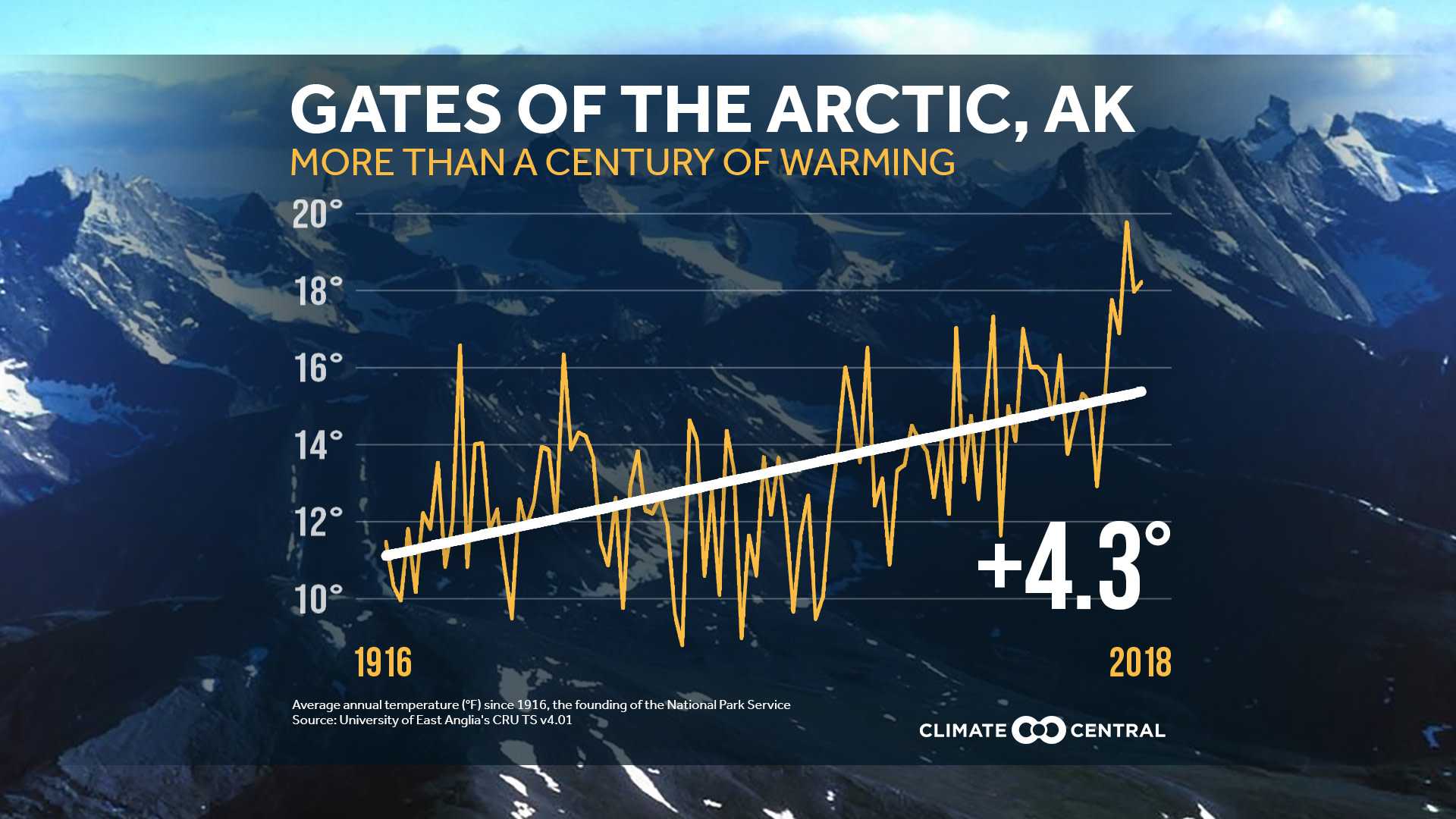The National Park Service (NPS) turned 103 years old this week.
National parks areas have been warming at twice the rate of the rest of the U.S.
Climate Central’s analysis of historical temperatures found that all but one of the 62 national parks analyzed had an increase in average temperature since the establishment of the National Park Service in 1916.
Right click and Save As to Download Image(s)
WHAT YOU NEED TO KNOW
Of the 62 parks analyzed by Climate Central, 39 have experienced 2 degrees or more of warming since the first year of the NPS.
Eight of the top ten warming national parks are all outside the contiguous U.S.—in Alaska, Hawaii and the Virgin Islands.
While the U.S. as a whole is already seeing strong warming effects, 2018 study published in Environmental Research Letters found that park areas may be experiencing an outsized impact of climate change—with mean average temperature increasing at twice the national rate between 1895 and 2010.
The National Park Service has been the steward of America’s treasured areas of wilderness and beauty since August 15, 1916. Last year the park system exceeded 318 million visitors.
POTENTIAL STORY ANGLES
How are national parks near you being impacted by climate change? The non-profit advocacy group National Parks Conservation Association has an interactive site that highlights the effects of climate change on a number of parks. A 2018 study looked at historical and projected temperature and precipitation trends for 417 national park sites, monuments, and battlefields. To see all the parks in your neck of the woods (pun intended!) check out the park finder.
How healthy is the air quality in national parks near you? Live weather and air quality data in selected national parks enable visitors to check for unhealthy ozone and particulate matter advisories as well as be on the lookout for extreme weather conditions.
LOCAL INTERVIEW SUGGESTIONS
The National Parks Conservation Association, an advocacy group whose mission it is to protect and enhance the national park system, provides fact sheets from regional offices and field reports that provide local contacts to interview.
The SciLine service,500 Women Scientists or the press offices of local universities may be able to connect you with local scientists who are knowledgeable about how climate change is affecting parks and natural areas in your state.
NATIONAL INTERVIEW SUGGESTIONS
Patrick Gonzalez
Associate Adjunct Professor, UC Berkeley
Department of Environmental Science, Policy, and Management
Climate change scientist, forest ecologist
Co-Author, “Disproportionate Magnitude of Climate Change in United States National Parks”
Mark Wenzler
Senior Vice President Conservation Programs
National Parks Conservation Association
Diane Regas
President and CEO
The Trust for Public Land
Contact: Keith Maley, Director of Public Relations
HOW WE GOT THE DATA
Climate Central analyzed average annual temperature trends at 62 National Parks since 1916 using the University of East Anglia's CRU TS v4.01 dataset. Temperatures were averaged across all areas within 30km of park boundaries (Monahan and Fisichelli 2014). Trends are based on linear regression analysis.
